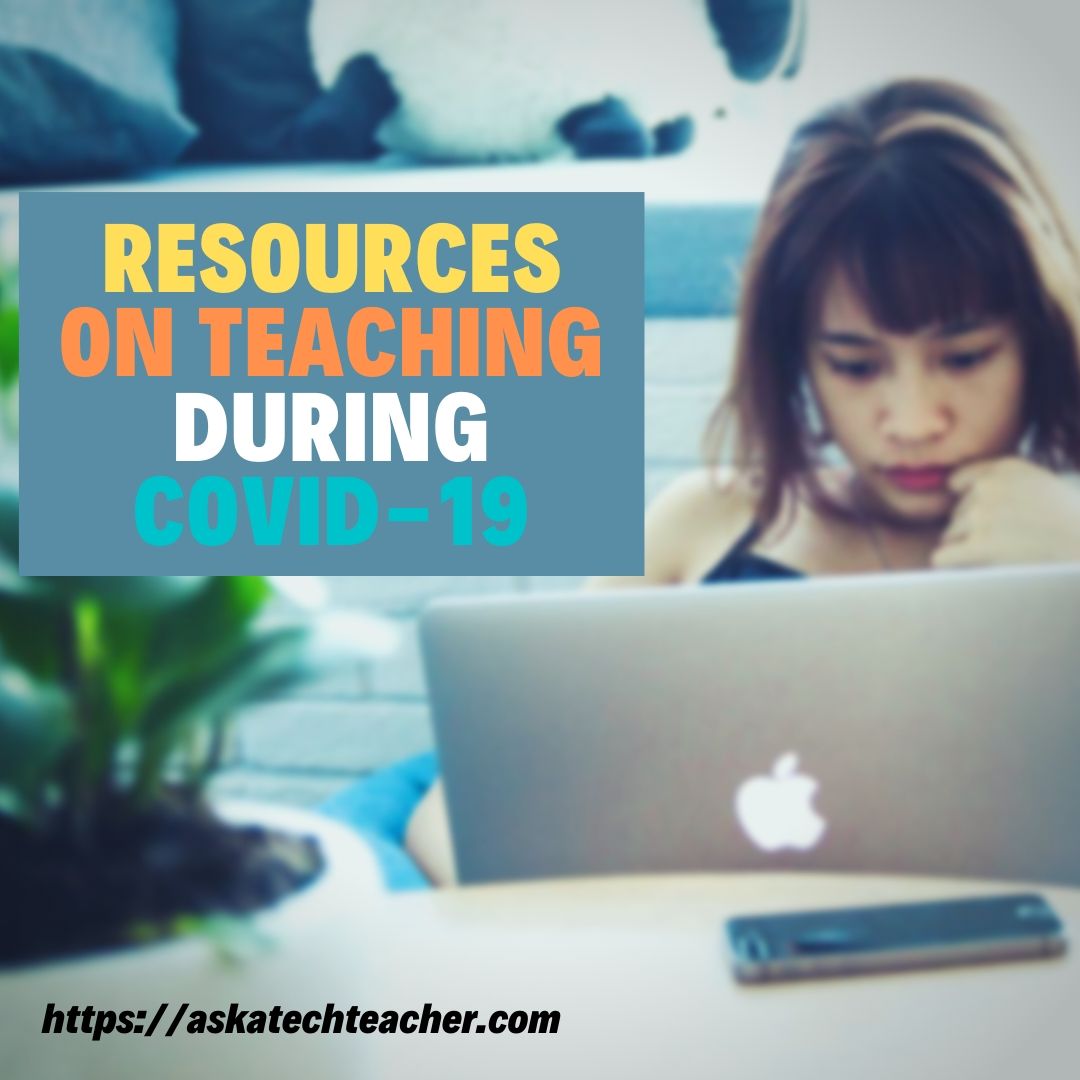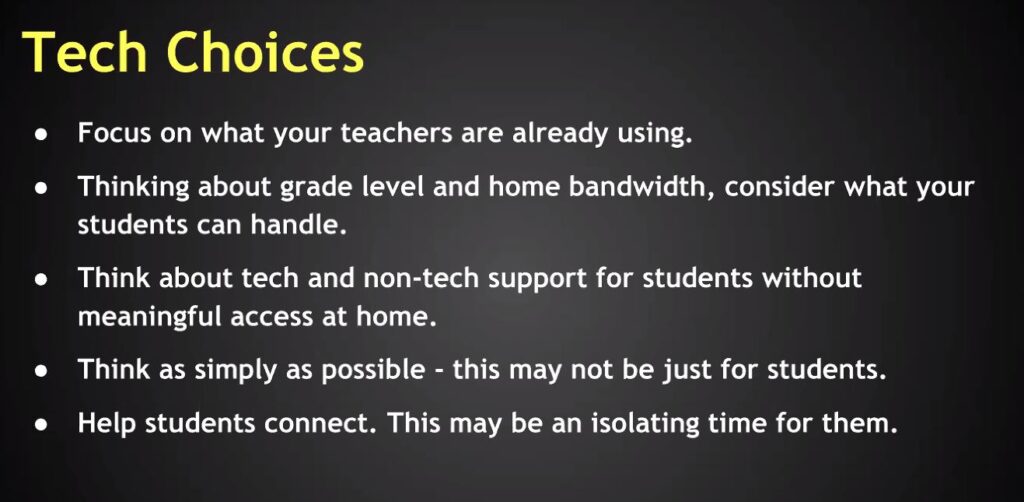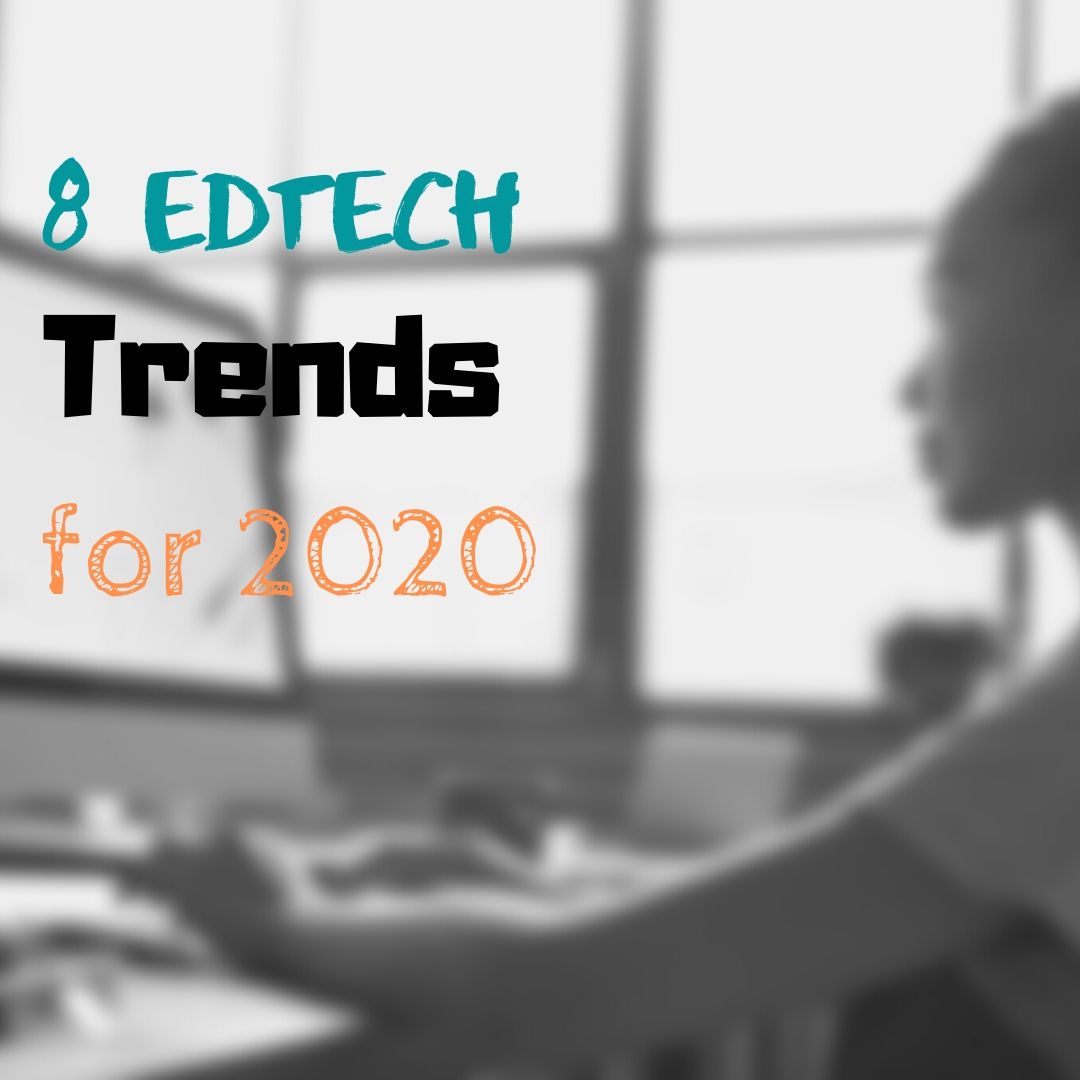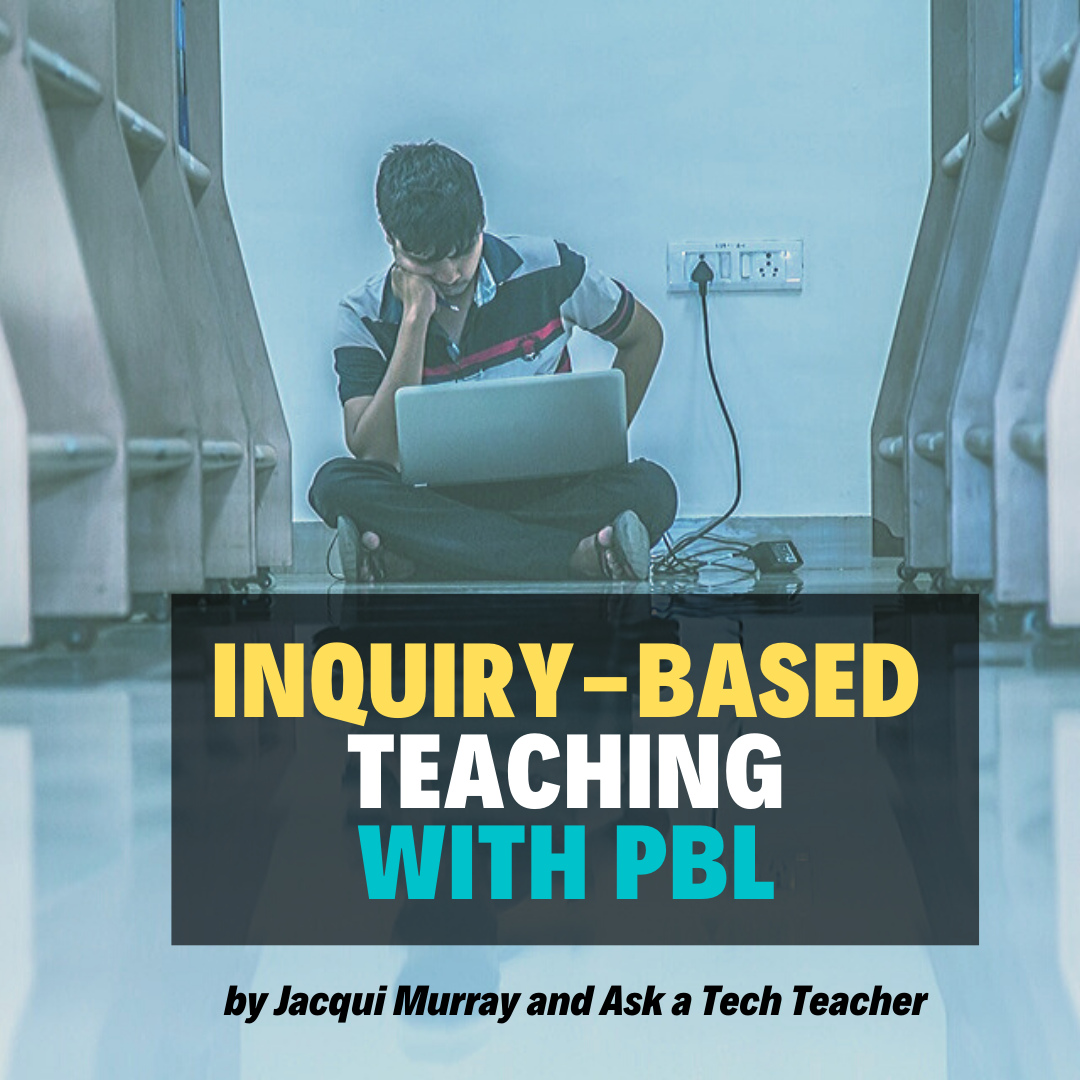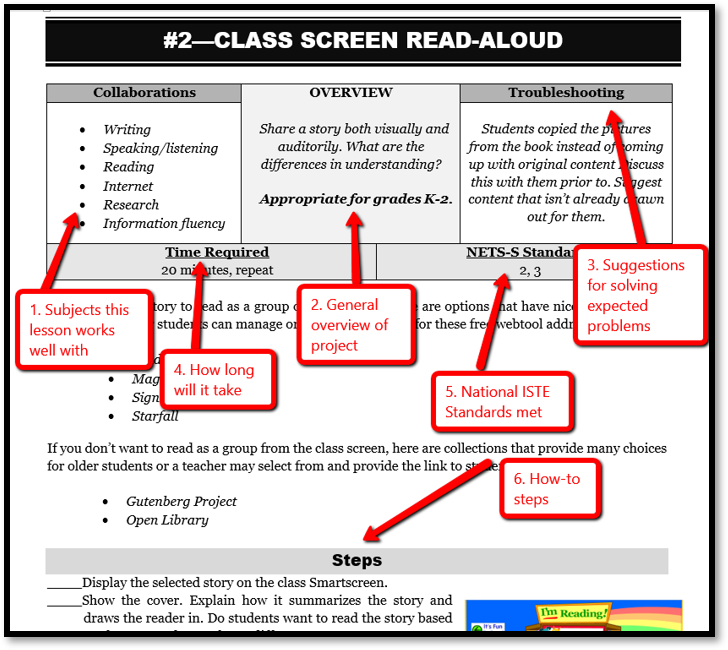Why Teach Poetry?

April is National Poetry Month. For thirty days, we celebrate the value and joy that poetry brings to our world. According to the Academy of American Poets, the goals are:
- Highlight the extraordinary legacy and ongoing achievement of American poets
- Introduce more Americans to the pleasures of reading poetry
- Bring poets and poetry to the public in immediate and innovative ways
- Make poetry a more important part of the school curriculum
- Increase the attention paid to poetry by national and local media
- Encourage increased publication, distribution, and sales of poetry books
- Increase public and private philanthropic support for poets and poetry
All across the nation, school, teachers, students, libraries, and families celebrate by reading, writing, and sharing poetry. Here are websites that do all that and more. Share them with students on a class page, Symbaloo, or another method you’ve chosen to share groups of websites with students.
When I was in high school, I was forced to learn poetry. I didn’t want to, saw no benefit to it, and unfortunately, the teacher didn’t change my mind. All that analyzing meaning and deconstructing stanzas went right over my head. Worse, selections such as Beowulf and anything by Elizabeth Barrett Browning seemed unrelated to my life and goals. Poems I loved like “The Charge of the Light Brigade”, “The Raven”, and “The Road Not Taken” were rare. It wasn’t until University, where I discovered that poetry speaks the language of dreams, that I fell in love with it.
Thankfully, today’s teachers communicate poetry’s essence much better than what I experienced.
What is poetry?
When many people think of poetry, they visualize flowing groupings of soulful words as pithy and dense as a fruitcake and for some, just as (un)appealing. I’ll get back to that in a minute, but first, here’s a definition (from Wikipedia):
an art form in which human language is used for its aesthetic qualities in addition to, or instead of, its notional and semantic content.
You are most likely to recognize a poem by its truncated lines that rarely end in a period (though this isn’t always true), the rhythm created when reading it, the liberal use of literary devices such as alliteration and similes, and its ability to tell an entire story in a very (very) few stanzas. A good poem not only communicates with words but with emotion, senses, and memories, it gives a reader permission to interpret the content in ways that speak to his/her dreams. It may ask a question or answer one but always, it encourages the reader to think.
Share this:
- Click to share on Facebook (Opens in new window) Facebook
- Click to share on X (Opens in new window) X
- Click to share on LinkedIn (Opens in new window) LinkedIn
- Click to share on Pinterest (Opens in new window) Pinterest
- Click to share on Telegram (Opens in new window) Telegram
- Click to email a link to a friend (Opens in new window) Email
- More
Britannica LaunchPacks free of charge to US Schools
T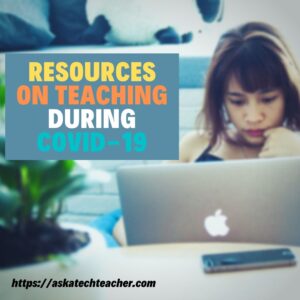 here are lots of companies stepping up to help the need to move learning online. The latest is Britannica:
here are lots of companies stepping up to help the need to move learning online. The latest is Britannica:
Britannica’s LaunchPacks® offered free of charge to all US schools
As schools across the United States close or prepare to close to prevent the spread of COVID-19, Encyclopaedia Britannica is offering all schools’ and students free access to its popular LaunchPacks® Science and Social Studies learning content.
LaunchPacks offers K-12 students a full range of articles, images, videos and primary sources of information to engage children in ‘factually correct’ learning content. Presented through an online engaging interface, optimized for smart devices, Britannica is offering free access to both LaunchPacks Social Studies and LaunchPacks Science.
Each content pack includes a variety of multimedia resources to match the PreK-12 science and social studies curriculums, to promote critical inquiry, and build connections between disciplines.
LaunchPacks offers the highest quality learning content, assessments, reading support tools, and translations that enable non-native English-speaking parents to engage with at-home learning. The wealth of learning content makes it ideal for virtual teaching and learning, to minimize disruption and impact on students, families, and staff.
To access the platform, schools can register at http://britannicalearn.com/covid-19-free-resources and refer to the ‘how to use’ guide for remote learning at LaunchPacks. A team member will promptly help users set up free access to LaunchPacks and share remote learning information and resources.
“Our team at Britannica is made up of dedicated teachers, educators, and parents,” said Rhea Vitalis, global director of marketing and social media with Britannica Digital Learning. “Your school and the wellbeing of your staff and students are our top priorities. Please don’t hesitate to reach out if there are additional ways we can ease your burden. We are here to offer continued support, relief, and guidance through these uncertain times.”
Share this:
- Click to share on Facebook (Opens in new window) Facebook
- Click to share on X (Opens in new window) X
- Click to share on LinkedIn (Opens in new window) LinkedIn
- Click to share on Pinterest (Opens in new window) Pinterest
- Click to share on Telegram (Opens in new window) Telegram
- Click to email a link to a friend (Opens in new window) Email
- More
Resources You Need During COVID-19
 My inbox–probably yours, too–is flooded with suggestions, how-tos, and don’t-do’s, on teaching online as a strategy for dealing with Covid-19. Though I’m not happy about the reason, I’m thrilled at the interest in online classes. I’m an adjunct professor – online only–for a variety of major universities (CSU for one). I’ve taught many years in both environments and love online teaching because it is flexible, diversified, self-directed, and self-paced. I agree with many studies—that online is more effective (one from IBM).
My inbox–probably yours, too–is flooded with suggestions, how-tos, and don’t-do’s, on teaching online as a strategy for dealing with Covid-19. Though I’m not happy about the reason, I’m thrilled at the interest in online classes. I’m an adjunct professor – online only–for a variety of major universities (CSU for one). I’ve taught many years in both environments and love online teaching because it is flexible, diversified, self-directed, and self-paced. I agree with many studies—that online is more effective (one from IBM).
As I received the onslaught of teach-online resources, I collected those that made the most sense. Below is a short curation of the most useful articles, links, resources, and webinars to help you through this challenging environment:
Online articles:
- Resources, tips and more for remote and e-learning (teaching online) — from Educational Technology Guy
- Tools to prepare for school closures–suggested by Common Sense
- Advice for new Online Teachers–from EdSurge
- Navigating Uncertain Times: How Schools Can Cope With Corona virus–from EdSurge
- Understanding the Impact of Coronavirus on K-12 Education–from EdSurge
- Newsela COVID-19 resource center (and free access to their paid products this school year)
- A live-tracker of the spread of the disease from Johns Hopkins University.
- Snow Day? 7 Ways to Keep Teaching
- An Open Letter to Teachers About Online Classes
- Remote Learning: Tips for Thriving in This Ecosystem
- Alice Keeler’s Tips and Resources for Managing and Maximizing Remote Learning
Online webinars:
One of the best I’ve watched in the last few weeks (as I dig into this subject) is Rushton Hurley’s (here’s the link). Here are some great suggestions for teachers who have to start fast with little preparation:
Here are three webinars from the knowledgeable Richard Byrne: Three Free Webinars About Transitioning to Teaching Online
Distance Learning Strategies for Education Leaders, Part 1
Date: March 17th, 2020
Distance Learning Strategies for Education Leaders, Part 2
Date: March 20th, 2020
A short curated list of resources for teaching online:
How-to
-
- Distance Learning with Google Slides–from Alice Keeler
- Resources for Teaching Online–from Edublog
Online chats
-
- Adobe Connect–fully-featured with lots of options for meeting students online
- Google Hangouts–max. of 10-15 people
- Nepris–bring experts into your classes
- Skype
- Unhangouts–gather in the virtual lobby and then join a GHO
Online course sites
-
- Blackboard
- Canvas
- CourseSites–like Blackboard, but free for some set-up
- Iteach.world–online class platform
Virtual Classrooms/Meetings
-
- Canvas–and it’s Big Blue Button conference option
- Draw Chat–virtual meeting with a whiteboard
- Google Hangouts
- Webroom.net — virtual conference or meeting room
- Zoom
Big Questions
If you’re still with me, here are quick notes on questions I’ve gotten from fellow educators over the past week or so:
What can you as a parent do in advance?
- Be positive, upbeat about these changes. They are good—you will grow to like them. Know the pros and cons—they are balanced, maybe even skewed in favor of online.
- Assume the teacher will be flexible with students as they adapt to online learning.
- Don’t give up—try, try again, and come up with a solution that works even if it isn’t perfect.
- Let your child try to solve their problems but be there to help if they get stuck. Most online classes aren’t a virtual meeting. They’re a list of assignments, discussion boards, forums, and projects that are accomplished at the students own pace. While you’re at work, you can help your child with your own virtual meeting (via free programs like Google Hangouts, Zoom, and Webroom.net) by screen-sharing their assignment page. You can even remote in without nearly as much trouble as that used to be. Your child is not in the same room as the teacher. Don’t think you must be in the same room as your child to help.
- Know how to get in touch with the teacher (since you can’t walk in and visit their classroom). FB? Messaging? Email? What’s the best way?
What are the biggest problems I face moving my teaching online?
- Tech knowledge–don’t give up; there are only so many problems. Once they’re solved, most of the rest of the experience will go smoothly.
- Problems—solve these together, you and the parents. Don’t try to be perfect, just a problem-solver.
Many students don’t have a home computer or access to the internet. What do I do?
These are difficult issues and have caused many schools to resist online teaching. To meet the suddenness of the Corona-19 pandemic, some schools are lending out their extra Chromebooks and purchasing more with newly-available Federal and State funds. Many Districts are deploying mobile hotspots to help students with internet access. Where that isn’t practical, teachers send work to students as PDF files that can be viewed and annotated on a computer and then printed with student input (this is the choice made by some New Jersey schools with a high percentage of students without computers or internet connectivity).
What should students and families know before their first online session?
- Don’t be afraid.
- Get help if you’re stuck.
- Be a risk-taker—boldly go where few have gone before.
***
In the end, it comes down to flexibility. We as educators must be mindful of the students without access to technology and provide alternative-but-equal options that adapt lessons to their circumstances. The issue of equity is one of the most important as schools move to online teaching. NEA Today will cover this in upcoming issues as this evolves.
#coronavirus #remotelearning
–also published on NEA Today
Jacqui Murray has been teaching K-18 technology for 30 years. She is the editor/author of over a hundred tech ed resources including a K-12 technology curriculum, K-8 keyboard curriculum, K-8 Digital Citizenship curriculum. She is an adjunct professor in tech ed, Master Teacher, webmaster for four blogs, an Amazon Vine Voice, CSTA presentation reviewer, freelance journalist on tech ed topics, contributor to NEA Today, and author of the tech thrillers, To Hunt a Sub and Twenty-four Days. You can find her resources at Structured Learning.
Share this:
- Click to share on Facebook (Opens in new window) Facebook
- Click to share on X (Opens in new window) X
- Click to share on LinkedIn (Opens in new window) LinkedIn
- Click to share on Pinterest (Opens in new window) Pinterest
- Click to share on Telegram (Opens in new window) Telegram
- Click to email a link to a friend (Opens in new window) Email
- More
8 EdTech Trends to Watch Out for This 2020
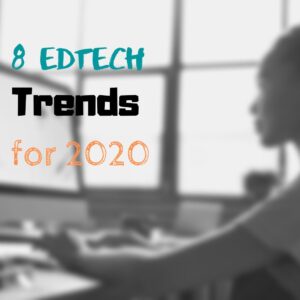 As always, education is changing. There are so many new ways to differentiate for varied learners, back-fill for some while enriching others without slowing anyone down. Being a teacher and a learner today is awe-inspiring. Ask a Tech Teacher contributor, Wally Clipper, has a great run-down on 8 trends you’ll want to watch in 2020:
As always, education is changing. There are so many new ways to differentiate for varied learners, back-fill for some while enriching others without slowing anyone down. Being a teacher and a learner today is awe-inspiring. Ask a Tech Teacher contributor, Wally Clipper, has a great run-down on 8 trends you’ll want to watch in 2020:
8 EdTech Trends to Watch Out for This 2020
Technology has vastly disrupted and improved numerous sectors around the world, be it the government and banking, or retail and marketing. Unsurprisingly, technology is also impacting the world of education. In fact, a study on Forbes found that global education technology (EdTech) is one of the fastest-growing segments today, and is expected to be worth $252 billion by the end of this year.
While EdTech has been helping schools and other educational institutions a lot since it was introduced, its benefits have grown even more this year. From digital certificates to learning analytics, here are eight EdTech trends to look forward to in the coming months.
Video-assisted Learning
Gone are the days when teachers had to drag TVs into classrooms to let students watch films. Now, nearly every classroom is at least equipped with a screen and projector. Additionally, Chron reports that some schools have even replaced the usual blackboard and whiteboard with smartboards this year. These devices double as both a whiteboard and a screen. Plus, they have apps that let you interact with whatever’s projected onto them with the touch of a finger.
Share this:
- Click to share on Facebook (Opens in new window) Facebook
- Click to share on X (Opens in new window) X
- Click to share on LinkedIn (Opens in new window) LinkedIn
- Click to share on Pinterest (Opens in new window) Pinterest
- Click to share on Telegram (Opens in new window) Telegram
- Click to email a link to a friend (Opens in new window) Email
- More
15 St. Patrick’s Day Resources For Your Class
Getting ready for St. Patrick’s Day? Try these fun websites:
- Color the shamrock
- Color the Pot-o-gold
- Color the leprechaun
- Puzzle–St. Pat’s Puzzle
- Puzzle–St. Pat’s puzzle II
- Puzzle–St. Pat’s drag-and-drop puzzle
- Puzzle–St. Pat’s slide puzzle
- Puzzles and games
- St. Patrick’s Day history–video
- St. Pat’s Day songs–video
- Tic tac toe
- Webquest for St. Patrick’s Day I
- Webquest II
- Wordsearch
Share this:
- Click to share on Facebook (Opens in new window) Facebook
- Click to share on X (Opens in new window) X
- Click to share on LinkedIn (Opens in new window) LinkedIn
- Click to share on Pinterest (Opens in new window) Pinterest
- Click to share on Telegram (Opens in new window) Telegram
- Click to email a link to a friend (Opens in new window) Email
- More
How to Eteach in a Covid-19 Pandemic
If your teaching has been moved online in response to the Covid-19 pandemic, learn which webtools make online learning exciting for kids and easy for you in this class–starts March 23rd!
MTI 562: The Tech-infused Teacher
MTI 562 starts Monday, March 23, 2020
Share this:
- Click to share on Facebook (Opens in new window) Facebook
- Click to share on X (Opens in new window) X
- Click to share on LinkedIn (Opens in new window) LinkedIn
- Click to share on Pinterest (Opens in new window) Pinterest
- Click to share on Telegram (Opens in new window) Telegram
- Click to email a link to a friend (Opens in new window) Email
- More
World Maths Day–March 14
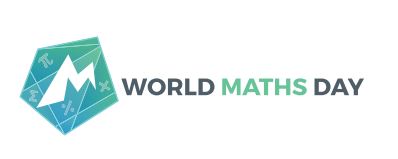 The first World Maths Day was held on March 14, 2007 (also Pi Day), and has ever since been held occasionally on the 1st Wednesday in March. March 2020 World Maths Day is one of the world’s largest global educational events aimed at lifting numeracy standards in a fun and meaningful way. Why not celebrate with your own fun maths teaching – take a look at our lovely supporting resources! Find out more at the World Maths Day Website
The first World Maths Day was held on March 14, 2007 (also Pi Day), and has ever since been held occasionally on the 1st Wednesday in March. March 2020 World Maths Day is one of the world’s largest global educational events aimed at lifting numeracy standards in a fun and meaningful way. Why not celebrate with your own fun maths teaching – take a look at our lovely supporting resources! Find out more at the World Maths Day Website
World Maths Day is a free, fun, online competition with up to 4 million students world-wide participating. The competition measures speed in arithmetic and numeracy skills on the Live Mathletics platform and runs for 48 hours and is open to all schools around the world. Students compete online with other students and top scores are displayed on a live ‘Hall of Fame’.
@worldedugames
More on math
Math Webtools to Support Any Curriculum
Pi Day is Easy to Remember–Celebrate With Students
Share this:
- Click to share on Facebook (Opens in new window) Facebook
- Click to share on X (Opens in new window) X
- Click to share on LinkedIn (Opens in new window) LinkedIn
- Click to share on Pinterest (Opens in new window) Pinterest
- Click to share on Telegram (Opens in new window) Telegram
- Click to email a link to a friend (Opens in new window) Email
- More
Last Chance: The Tech-infused Teacher (MTI 562)
MTI 562: The Tech-infused Teacher
MTI 562 starts Monday, March 23, 2020
The 21st century lesson blends technology with teaching to build a collaborative, differentiated, and shared learning environment. In this course, you will use a suite of digital tools to make that possible while addressing overarching concepts like digital citizenship, internet search and research, authentic assessment, digital publishing, and immersive keyboarding. You will actively collaborate, share knowledge, provide constructive feedback to classmates, publish digitally, and differentiate for unique needs. Classmates will become the core of your ongoing Personal Learning Network.
Assessment is based on involvement, interaction with classmates, and completion of projects so be prepared to be fully-involved and an eager risk-taker. Price includes course registration, college credit, and all necessary materials. To enroll, click the link above and sign up. Email askatechteacher at gmail dot com with questions.
Share this:
- Click to share on Facebook (Opens in new window) Facebook
- Click to share on X (Opens in new window) X
- Click to share on LinkedIn (Opens in new window) LinkedIn
- Click to share on Pinterest (Opens in new window) Pinterest
- Click to share on Telegram (Opens in new window) Telegram
- Click to email a link to a friend (Opens in new window) Email
- More
New Book: Inquiry and PBL
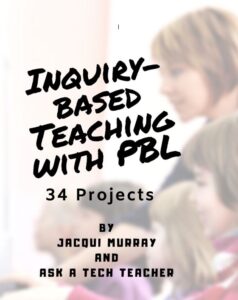 Ask a Tech Teacher has a new book out, Inquiry-based Teaching with PBL: 34 Lesson Plans. Inquiry-based teaching requires a mindset that makes curiosity a cornerstone of learning with lessons that value it. This book includes 34 lesson plans as well as discussion on inquiry-based teaching strategies:
Ask a Tech Teacher has a new book out, Inquiry-based Teaching with PBL: 34 Lesson Plans. Inquiry-based teaching requires a mindset that makes curiosity a cornerstone of learning with lessons that value it. This book includes 34 lesson plans as well as discussion on inquiry-based teaching strategies:
The Inquiry-based Teacher
The Inquiry-based Classroom
The Socratic Method
Project-based Learning (PBL)
Each lesson includes an overview, steps, core collaborations, time required, ISTE standards, troubleshooting, and web-based tools to support learning.
Projects include Talking Pictures, Shape Stroll, Picture the Details, Brainstorming, Life Cycle Reports, Digital Citizenship, Venn Diagrams, Landforms, Cyberbullying, Tessellations, Twitter in Education, and more. Popular webtools used are:
Share this:
- Click to share on Facebook (Opens in new window) Facebook
- Click to share on X (Opens in new window) X
- Click to share on LinkedIn (Opens in new window) LinkedIn
- Click to share on Pinterest (Opens in new window) Pinterest
- Click to share on Telegram (Opens in new window) Telegram
- Click to email a link to a friend (Opens in new window) Email
- More
Subscriber Special: March
Every month, subscribers to our newsletter get a free/discounted resource to help their tech teaching.
March:
Join our technology-in-education newsletter for updates on edtech resources, classes, and webtools
get 10% off on any Structured Learning products
Share this:
- Click to share on Facebook (Opens in new window) Facebook
- Click to share on X (Opens in new window) X
- Click to share on LinkedIn (Opens in new window) LinkedIn
- Click to share on Pinterest (Opens in new window) Pinterest
- Click to share on Telegram (Opens in new window) Telegram
- Click to email a link to a friend (Opens in new window) Email
- More

